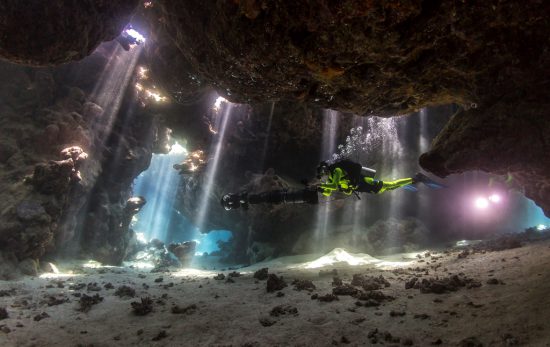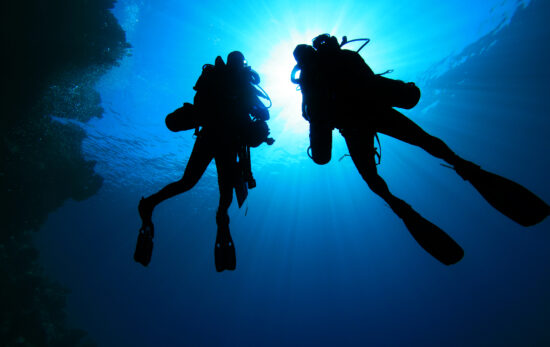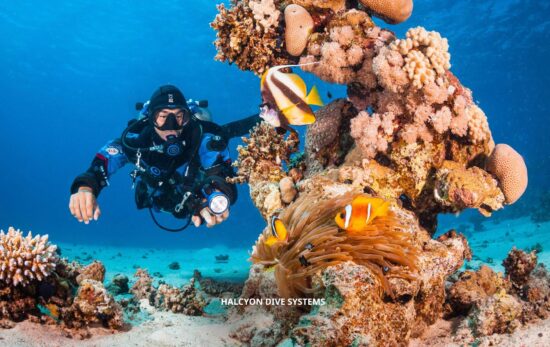In this article, we meet Lamar Hires and learn more about his influence in the technical diving industry. Hires was interviewed by a member of PADI staff, and this article was originally published on the TecRec blog on March 29, 2011.
What is your background and current involvement in diving?
I started cave diving in 1979 and became a cave instructor in 1984 and technical instructor in 1991. I live in North Florida and have logged over 5000 dives, 90% are cave dives. As President and CEO of Dive Rite, I design and manufacture equipment for cave and technical diving.
How did you get into tec diving?
As a cave diver, I became part of the technical diving family. I needed gases other than air to cut decompression and narcosis issues on deep dives. After we discovered Nitrox and then launched the first Nitrox computer, called the Bridge in 1991, cave diving was never the same. We started seeing substantial decompression savings, so we kept looking for ways to cut our deco obligation even more with travel gases and oxygen decompression.
Do you have any specialised areas of interest?
Rebreathers and sidemount are my specialty. I have combined sidemount techniques to bailout application for rebreathers in order to streamline the rig as much as possible. Since I look at everything from a cave diving perspective, redundancy and backup systems are very important to me.
What do think the greatest challenges are in this kind of diving?
For cave diving, its more mental than physical, because you can’t simply call a dive and surface. Getting to the surface requires travel back to the exit, so you must deal with any problems underwater. If you are an hour from the entrance, then you are an hour from your exit, plus decompression and you have to be comfortable with that reality.
What are the most important attributes of a tec diver for the type of diving you do?
The diver must be honest with himself about the proven rules we use for survival. We use accident analysis to evaluate our training and diving practices. A good cave diver is one who learns quickly and is open to new ideas.
What are the most likely mistakes a tec diver can make in your kind of diving?
Like pilots, the more hours you have, the more comfortable you get and this can lead to complacency with habits and equipment. This leads to costly mistakes. After deep diving, gas management and continuous guideline issues are responsible for most accidents in caves.
How do you prepare for a demanding technical dive?
A good night’s sleep and proper hydration, I have had two chamber rides, and the worst was from dehydration. Dehydration doesn’t occur overnight, so you can’t hydrate by drinking a bottle of water. I start properly hydrating days before a big dive.
What were your best or worst tec diving experiences?
I have had many great dives over the years, exploring new caves around the world. My worst experience was getting lost and having a double regulator failure on the same cave dive. While setting up equipment, I was distracted and only partially opened the valves on my doubles. This was years ago, before outboard regulators and a center isolator valve. My reg was an old Sherwood manifold with center and side post. After going into a very low area, a tap on the ceiling closed the valve to the regulator I was breathing and I couldn’t arch my back in the low area to turn it on. I reached for my back up regulator, but it was so full of clay I couldn’t get air from the mouthpiece. I had to remove the cover to clean out the second stage while holding onto the guideline and holding my breath. Once I got air and into a larger tunnel I was able to reach the center valve and open the other regulator. Then, as we were exiting the cave we got into extremely low visibility were unable to see a visual gap from the cave line to the cavern line. I turned and went back into the cave and took a line that took me to a feint glow of daylight and exited from an offshoot tunnel. I was in open water with no idea of where I was or if I could get out of the water, but I was happy to be out of the cave.
Another harrowing dive happened at Blue Bird Spring. You can read about that one on the Dive Rite website here.
What influences your selection of dive gear?
I always look at the dive and determine if I have the right gear for the dive. If not, I design and build it. I firmly believe that no one type of equipment can do every kind of dive. If I need to dive back mount doubles, I do it. If I need sidemount, then I choose a sidemount rig. If I need a rebreather, etc. Equipment selection must match the mission.
What kind of person do you want diving in the same team as you?
Someone who is calm, level headed and doesn’t scare easily. I have been teaching for so many years and trained over 700 people to cave dive, so I am very choosey about whom I will actually do exploration with.
What advice would you give to someone thinking of getting into tec diving?
Don’t be cheap. Invest in quality equipment and quality training. For example, I don’t believe deep diving should be done on open circuit – been there done that, because at one time, that’s all we had. Now I believe rebreathers are the only safe way to dive deep.
Everyone has a personal definition for technical diving: deep diving, extensive dive planning and so on. My definition is simple: any dive that includes taking a regulator out of your mouth and putting another one in it is a technical dive. To date the number one cause of technical diving accidents is switching to the wrong gas at the wrong depth. Be careful with planning and marking bottles, make sure you have options. If you address this by diving a rebreather, then make sure you understand the rebreather and do your safety checks. Never dive a rebreather with a known problem or old sensors.







